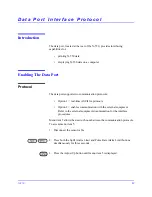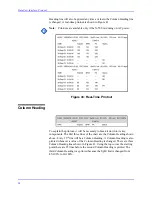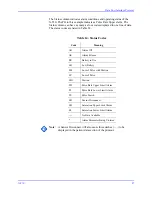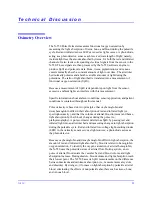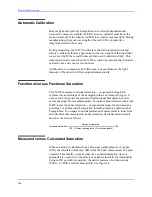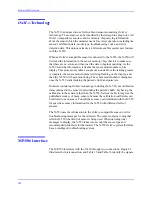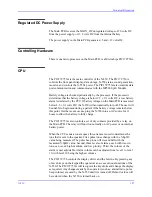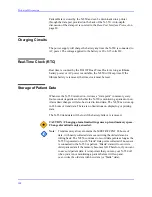
N-550
99
T e c h n i c a l D i s c u s s i o n
Oximetry Overview
The N-550 Pulse Oximeter measures functional oxygen saturation by
measuring the light absorption of tissue, bone, and blood during the pulsatile
cycle. Red and infrared sensor LED’s are used as light sources. A photodiode,
acting as a photodetector, senses each received wavelength of light; namely,
incident light less the amount absorbed by tissue, for both the red and infrared
channels. It also feeds corresponding electrical signals from the sensor to the
N-550. These signals are then processed by the N-550 software engine to
produce SpO
2
and pulse rate data. Bone, tissue, pigmentation, and venous
vessels normally absorb a constant amount of light over time. The arteriolar
bed normally pulsates and absorbs variable amounts of light during the
pulsations. The ratio of light absorbed is translated into a measurement of
functional oxygen saturation (SpO
2
).
Because a measurement of SpO
2
is dependent upon light from the sensor,
excessive ambient light can interfere with this measurement.
Specific information about ambient conditions, sensor application, and patient
conditions is contained throughout this manual.
Pulse oximetry is based on two principles: that oxyhemoglobin and
deoxyhemoglobin differ in their absorption of red and infrared light (i.e.,
spectrophotometry), and that the volume of arterial blood in tissue (and hence,
light absorption by that blood) changes during the pulse (i.e.,
plethysmography). A pulse oximeter determines SpO
2
by passing red and
infrared light into an arteriolar bed and measuring changes in light absorption
during the pulsatile cycle. Red and infrared low-voltage light-emitting diodes
(LED) in the oximetry sensor serve as light sources; a photodiode serves as
the photo detector.
Because oxyhemoglobin and deoxyhemoglobin differ in light absorption, the
amount of red and infrared light absorbed by blood is related to hemoglobin
oxygen saturation. To identify the oxygen saturation of arterial hemoglobin,
the N-550 uses the pulsatile nature of arterial flow. During systole, a new
pulse of arterial blood enters the vascular bed, and blood volume and light
absorption increase. During diastole, blood volume and light absorption reach
their lowest point. The N-550 bases its SpO
2
measurements on the difference
between maximum and minimum absorption (i.e., measurements at systole
and diastole). By doing so, it focuses on light absorption by pulsatile arterial
blood, eliminating the effects of nonpulsatile absorbers such as tissue, bone,
and venous blood.
Summary of Contents for OxiMax N-550
Page 1: ...N 550 Pulse Oximeter Service Manual min min SpO2 N 550 SatSeconds SpO2 ...
Page 10: ...Blank Page ...
Page 38: ...Blank Page ...
Page 64: ...Blank Page ...
Page 81: ...Disassembly Guide N 550 71 Figure 39 Equipotential Ground Terminal Removed ...
Page 82: ...Blank Page ...
Page 86: ...Spare Parts 76 Figure 40 Exploded View ...
Page 90: ...Blank Page ...
Page 108: ...Blank Page ...
Page 120: ...Blank Page ...
Page 130: ...Figure 56 Main PCB Parts Locator Diagram 129 Technical Description N 550 ...
Page 131: ...Figure 57 Front Panel Parts Locator Diagram 131 N 550 Technical Description ...
Page 136: ...Blank Page ...
Page 137: ... ...





